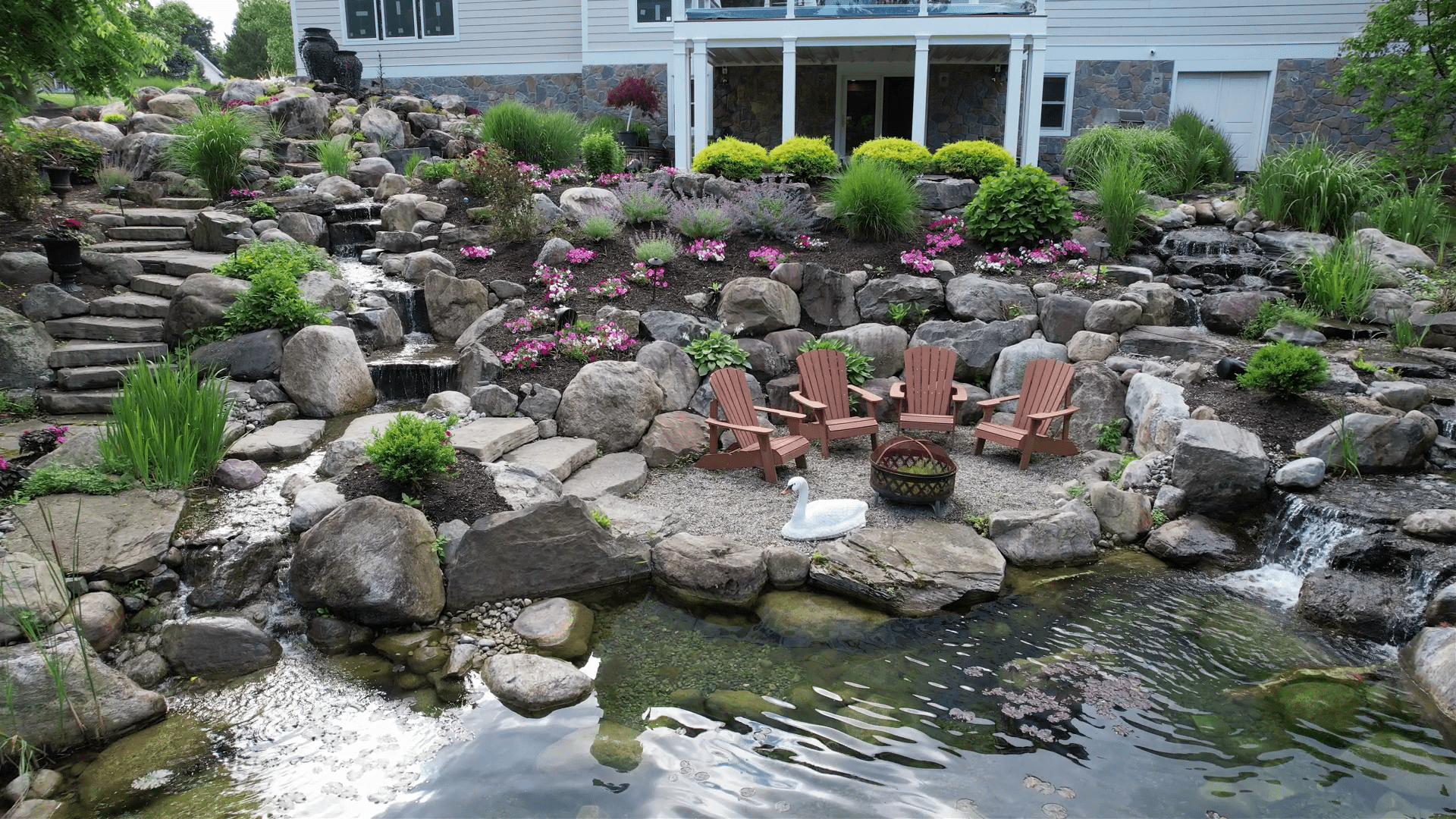In today’s environmentally conscious world, the approach to landscaping and garden features is evolving. Among these, the art of pond building in New Jersey is undergoing a significant transformation towards sustainability. This movement isn’t just about creating a water feature; it’s about crafting ecosystems that not only beautify our surroundings but also contribute positively to the environment. In this blog post, we’ll delve into the importance of eco-friendly practices in pond building and how, from Andover to West Milford, Garden State Koi is leading the charge in creating sustainable water features that harmonize with nature, provide a sanctuary for wildlife, and offer homeowners a serene retreat that is both beautiful and beneficial to the planet.
The Importance of Sustainability in Pond Building
Embracing eco-friendly practices in pond construction is not just a trend; it’s a commitment to environmental stewardship and sustainability. Such ponds are designed with the future in mind, aiming to minimize their ecological footprint while enhancing the natural landscape. Sustainable pond building involves the careful selection of materials, the implementation of natural filtration systems, and the use of renewable energy sources. These practices ensure that ponds not only add beauty to our gardens and serve as tranquil retreats but also play a crucial role in supporting local ecosystems. By prioritizing biodiversity, water conservation, and energy efficiency, eco-friendly ponds become a living testament to the harmony between human creativity and the natural world.
Garden State Koi’s Approach to Eco-Friendly Pond Building
At Garden State Koi, the approach to creating eco-friendly ponds in New Jersey is rooted in sustainability and environmental responsibility. This involves selecting materials that are not only durable and aesthetically pleasing but also have a minimal impact on the environment. Techniques such as utilizing natural filtration systems, which mimic the cleaning processes found in nature, and incorporating native plants that thrive in the local ecosystem, are fundamental. Additionally, Garden State Koi emphasizes the use of energy-efficient water pumps and solar power to reduce electricity usage. This comprehensive approach ensures that each pond is a self-sustaining ecosystem that enhances local biodiversity, conserves water, and minimizes the need for chemical treatments.
Through a series of case studies spanning from Andover to West Milford, Garden State Koi has demonstrated its expertise in eco-friendly pond building across New Jersey. These projects showcase a diverse range of water features, from serene backyard ponds to lively koi habitats, each designed with sustainability at its core. By integrating native plants, utilizing natural stone, and implementing energy-efficient systems, these case studies highlight the transformative power of eco-friendly ponds. Homeowners have witnessed their outdoor spaces evolve into thriving ecosystems that attract wildlife, conserve water, and provide a peaceful retreat, all while adhering to sustainable practices that benefit the environment.
Maintaining Your Eco-Friendly Pond
Maintaining an eco-friendly pond in New Jersey involves more than just regular cleaning; it’s about preserving the pond’s natural balance while minimizing its environmental impact. Homeowners are encouraged to adopt practices that support the pond’s ecosystem, such as using organic treatments for algae control and ensuring the health of aquatic plants and fish. Regular monitoring of water quality, careful management of pond fauna, and seasonal maintenance tasks also play crucial roles. These efforts not only ensure the longevity and beauty of the pond but also reinforce its role as a sustainable feature within the landscape.
It’s crucial to recognize the broader benefits of opting for eco-friendly pond construction. By choosing sustainable practices, homeowners not only enhance their own living spaces but also contribute positively to the local environment and community. Eco-friendly ponds are a testament to the beauty and resilience of nature, offering a sanctuary for wildlife and a serene retreat for families. We encourage readers to consider the long-term impact of their landscaping choices and to embrace eco-friendly pond building as a step towards a more sustainable future.
FAQ Section
- Q: What makes a pond eco-friendly?
A: An eco-friendly pond uses natural processes for filtration, requires less chemical treatment, and is designed to be energy efficient. - Q: Can eco-friendly ponds attract wildlife?
A: Yes, eco-friendly ponds support local ecosystems by providing habitats for various species. - Q: Are eco-friendly ponds more expensive to install?
A: While initial costs might be higher due to the quality of materials and techniques, long-term maintenance costs are often lower. - Q: How do I start planning an eco-friendly pond?
A: Consult with a professional pond builder who specializes in eco-friendly designs to understand your options.

